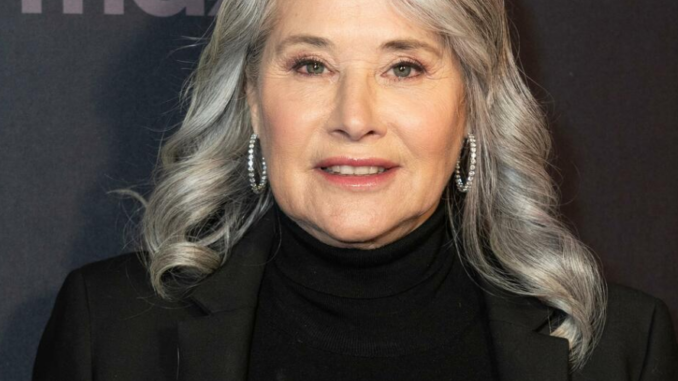
“The Sopranos,” created by David Chase, is widely regarded as one of the greatest television series of all time. The show has captivated audiences with its complex characters, intricate plots, and profound themes exploring the American dream, identity, and morality. However, its final episode, which aired on June 10, 2007, sparked a fierce debate among fans and critics alike. Lorejn Brako, a prominent voice in this discourse, argues that the ending was not only bad but fundamentally wrong. This essay delves into Brako’s perspective, examining the narrative choices made in the finale, the implications for character development, and the expectations of viewers that were left unmet.
Setting the Stage: The Legacy of “The Sopranos”
Before analyzing the ending, it is essential to appreciate what made “The Sopranos” a groundbreaking series. The show’s protagonist, Tony Soprano, portrayed brilliantly by James Gandolfini, navigates the treacherous waters of organized crime while grappling with personal and familial issues. Throughout its six seasons, “The Sopranos” expertly blended dark humor with profound moments of introspection, offering a nuanced portrayal of its characters and their struggles.
As viewers invested in the lives of Tony and his crew, they anticipated a resolution that would provide clarity to the series’ overarching narrative. However, the finale, titled “Made in America,” left many viewers feeling bewildered and unsatisfied.
The Ambiguity of the Finale
The final scene of “The Sopranos” is infamous for its abrupt cut to black, leaving audiences in a state of uncertainty about Tony’s fate. The scene takes place in a diner, where Tony is waiting for his family to arrive. As he scans the room, we see various characters who seem to be potential threats. The tension builds, and just as the song “Don’t Stop Believin'” reaches its climax, the screen goes black.
Lorejn Brako critiques this ending for its ambiguity. While some may argue that the open-ended nature of the finale aligns with the show’s exploration of existential themes, Brako contends that it denies viewers the closure they deserve after investing years in the series. Instead of providing a definitive conclusion to Tony’s story, the finale leaves audiences guessing and debating his fate. Brako argues that this lack of resolution diminishes the emotional impact of the narrative and undermines the character arcs developed throughout the series.
Character Development and Resolution
One of the hallmarks of “The Sopranos” is its deep character development. Tony’s journey, marked by his struggles with identity, morality, and family, was central to the narrative. Throughout the series, viewers witnessed his evolution—from a conflicted mob boss seeking therapy to a man trying to balance his criminal life with the demands of fatherhood.
In the finale, however, Brako argues that the characters are left in limbo, particularly Tony. The absence of resolution for Tony’s character arc is glaring. Throughout the series, Tony has made choices that reveal his moral ambiguity, and fans had hoped for a reckoning—whether it be redemption, punishment, or a deeper understanding of his character. Instead, the abrupt ending strips away any opportunity for meaningful closure or growth, leaving audiences feeling cheated.
Moreover, supporting characters like Carmela, Meadow, and Paulie also receive little to no resolution. Carmela’s struggles with her marriage and Meadow’s journey toward independence remain unresolved. Brako asserts that the finale’s failure to provide closure for these characters not only weakens the narrative but also diminishes the viewer’s emotional investment in their stories.
The Expectations of Viewers
Television series, particularly those with complex narratives like “The Sopranos,” create expectations among viewers. After years of investment in the characters and their journeys, audiences anticipate a payoff—whether in the form of resolution, clarity, or thematic closure. The finale’s ambiguity runs counter to these expectations, leaving viewers feeling frustrated and dissatisfied.
Brako argues that the ending alienates a significant portion of the audience who sought a more traditional resolution. While some critics laud the ambiguity as a bold artistic choice, others, including Brako, see it as a failure to honor the viewer’s emotional journey. In essence, the ending becomes a disservice to those who have followed Tony and his family through thick and thin.
Cultural Impact and Legacy
The cultural impact of “The Sopranos” is undeniable, and its legacy continues to influence modern television. However, the controversy surrounding the ending has also shaped how audiences perceive the series as a whole. Brako emphasizes that the finale has generated more discussion about its shortcomings than the show’s strengths. While ambiguity can be a powerful storytelling tool, it must be wielded judiciously, especially in a series with such rich narrative complexity.
Moreover, the ending has sparked numerous interpretations and theories, with fans attempting to decipher its meaning. While this discourse showcases the show’s impact, it also underscores the confusion and dissatisfaction that many felt. Brako believes that a more definitive conclusion would have solidified the series’ place in television history rather than leaving it shrouded in ambiguity.
Conclusion: A Call for Clarity
In conclusion, Lorejn Brako’s assertion that the ending of “The Sopranos” was bad and wrong resonates with many fans and critics who felt let down by the series finale. The ambiguity, lack of resolution for key characters, and unmet expectations ultimately detracted from the show’s legacy. While “The Sopranos” remains a monumental achievement in television history, the controversy surrounding its conclusion serves as a reminder of the importance of closure in storytelling. As viewers continue to reflect on the series, the hope remains that future creators will take note of these lessons, ensuring that the emotional investment of audiences is honored with thoughtful, satisfying conclusions.
